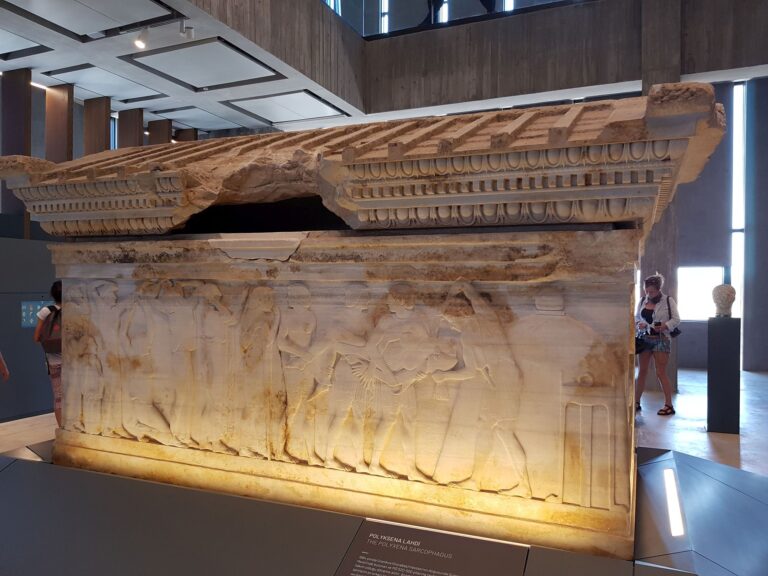Finding the 2,500-Year-Old Polyxena Sarcophagus and the Eternal Eyewitness of Canakkale Village Women


In 1994, a moment frozen in time for over two millennia came to light with the discovery of the 2,500-year-old Polyxena Sarcophagus in Canakkale. This ancient artifact vividly depicted the haunting scene of the sacrificial moment of Polyxena, the daughter of King Priam of Troy. The intricately carved scenes on the sarcophagus unveiled the agony of Polyxena’s sacrifice and the profound sorrow etched on her face.
What added a layer of fascination to this archaeological find was the tangible connection to local history. The sarcophagus emerged from the depths of the “Kızöldün Tumulus,” a burial mound known by the residents of Canakkale for centuries. The villagers had passed down stories and legends about this tumulus through generations, and the unearthing of the Polyxena Sarcophagus brought these tales to life.

Among the most poignant aspects of this discovery was the acknowledgment of the village women who, in a sense, stood witness to the pain depicted on the sarcophagus. The connection between the ancient portrayal of Polyxena’s sacrifice and the emotional resonance felt by contemporary women created a bridge across the ages, making the archaeological find not just a relic of the past but a living testament to the shared human experience of grief and sacrifice. The Polyxena Sarcophagus, with its intricate carvings and historical context, stands as a poignant reminder of the enduring power of storytelling and the timeless threads that bind us to our shared history.